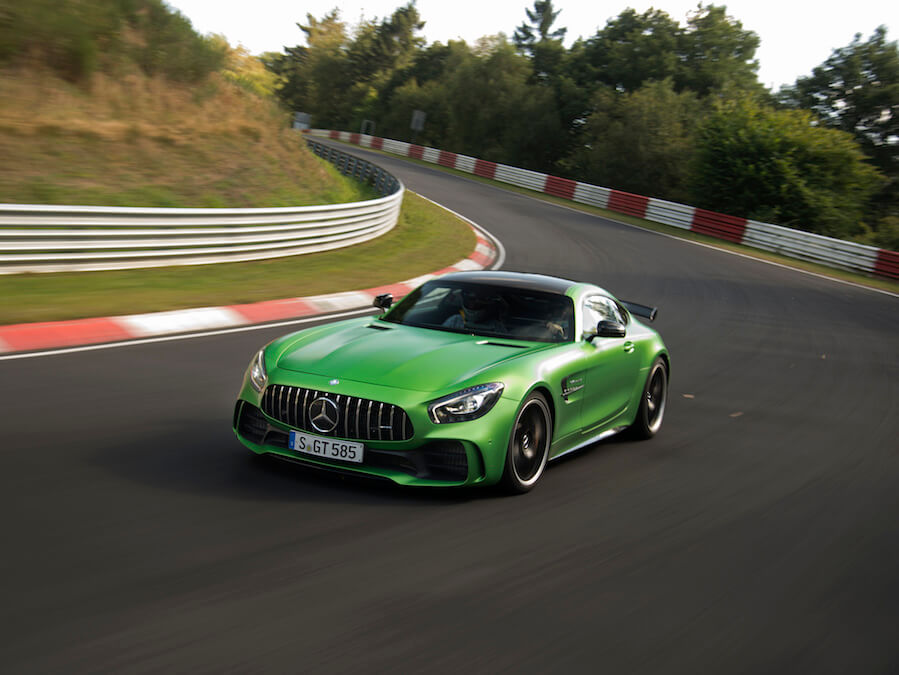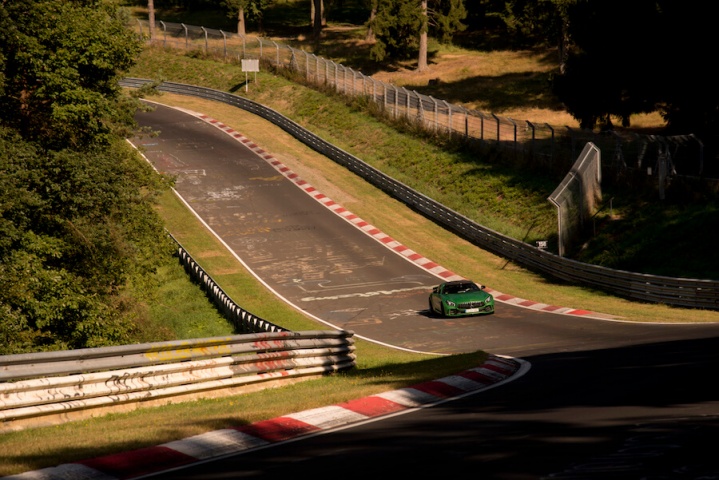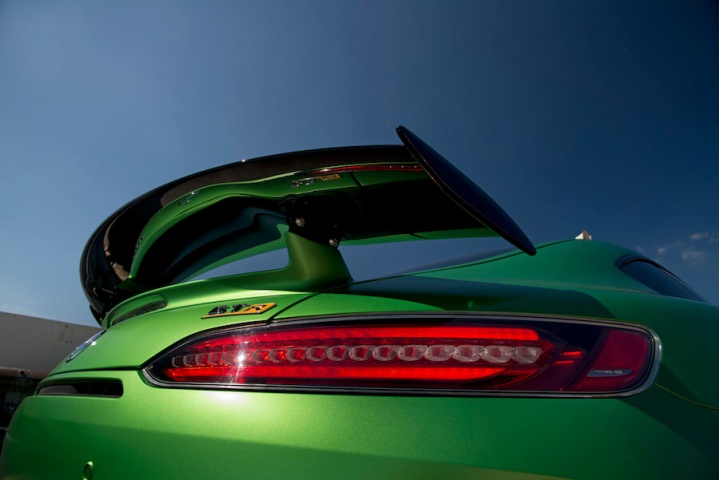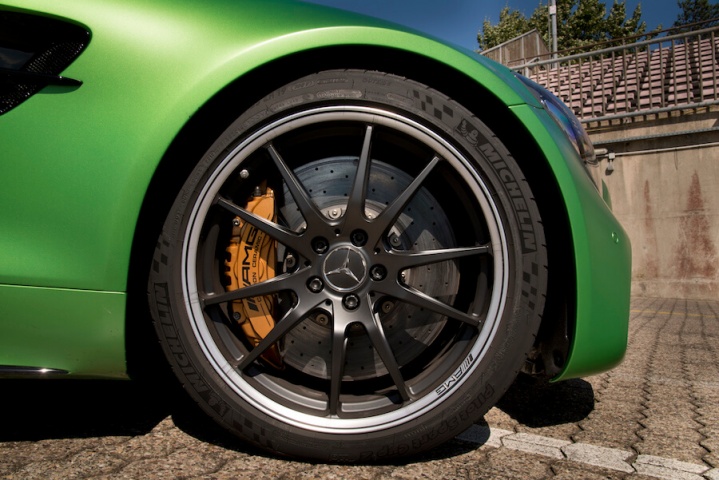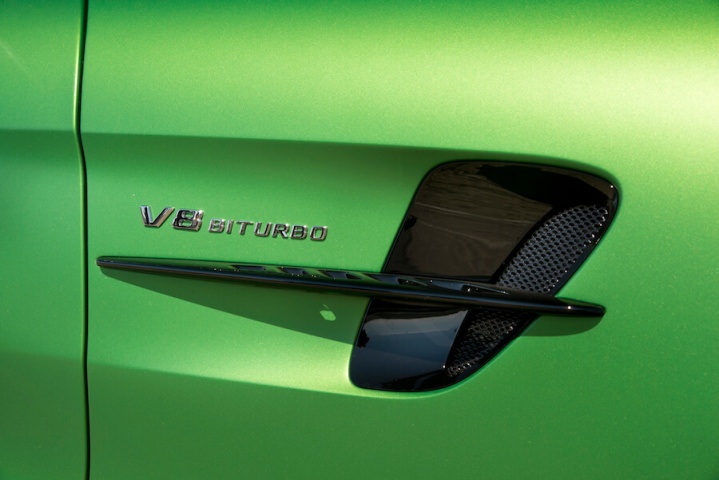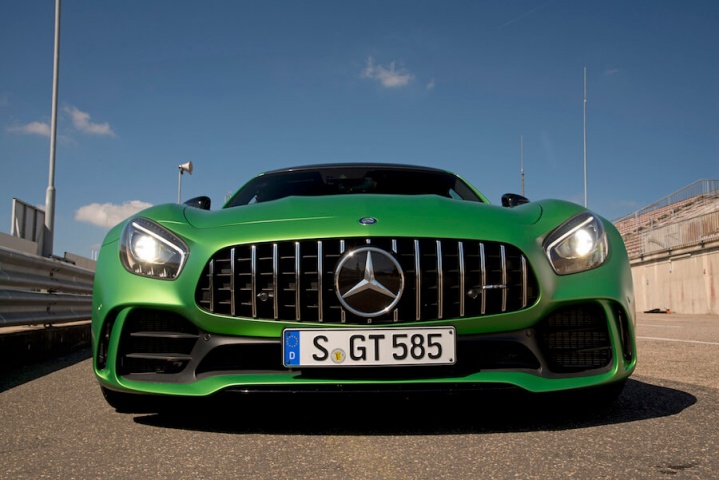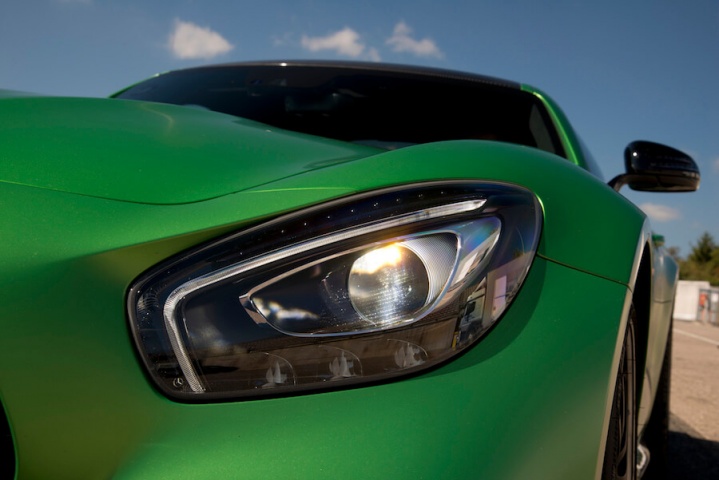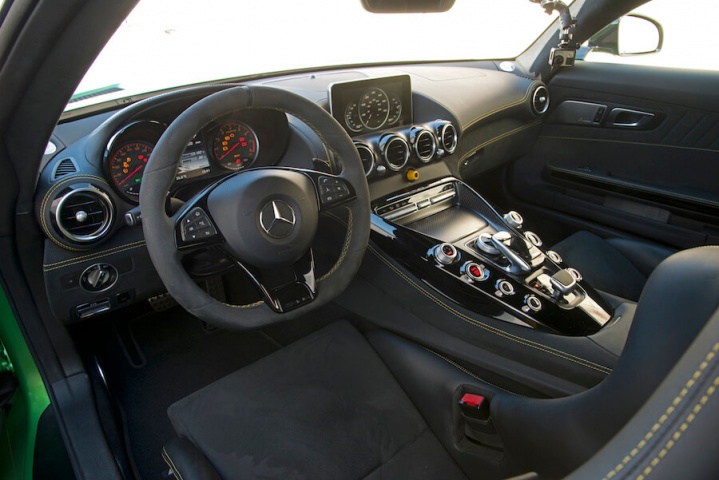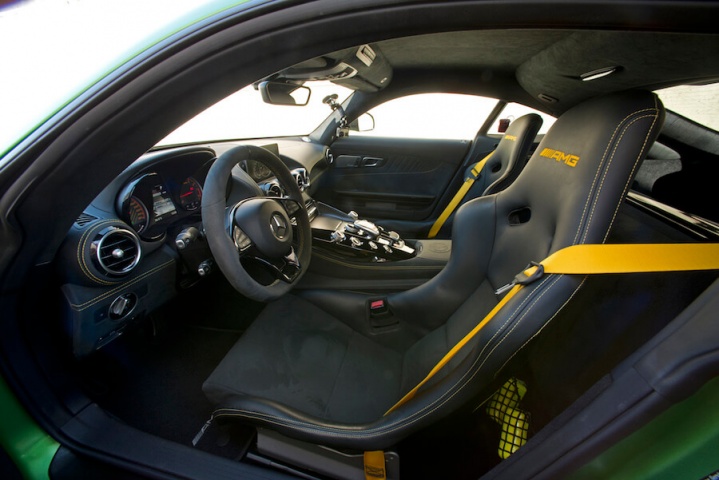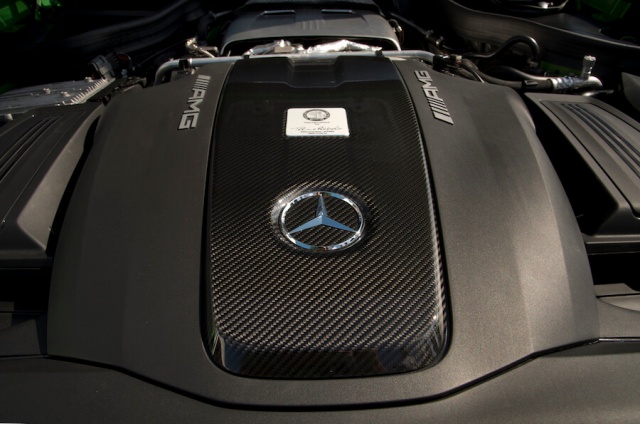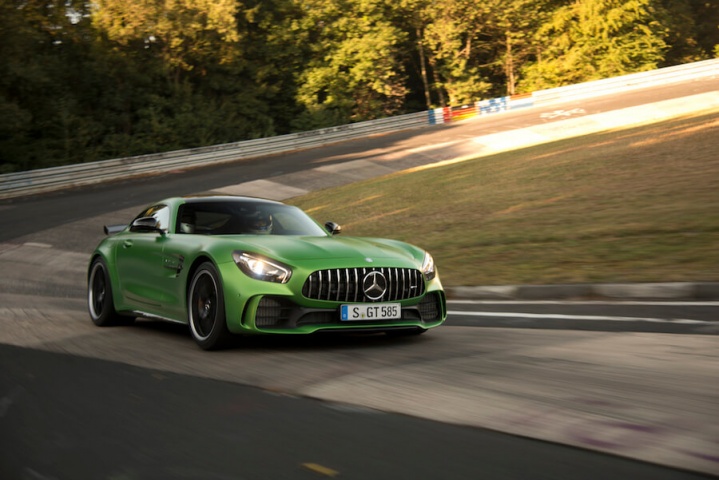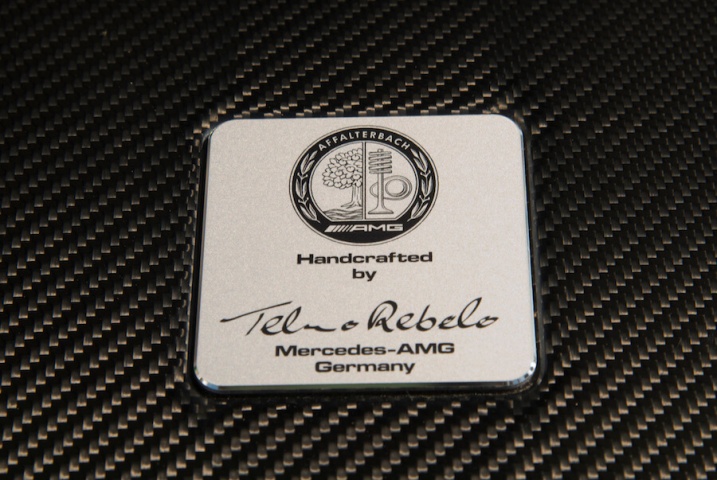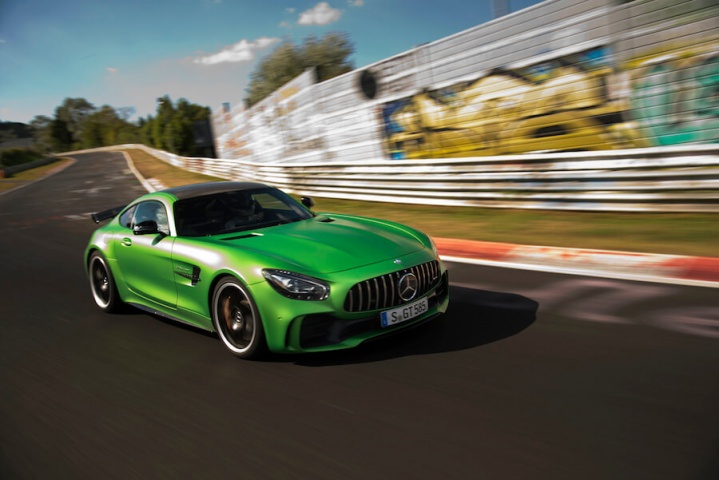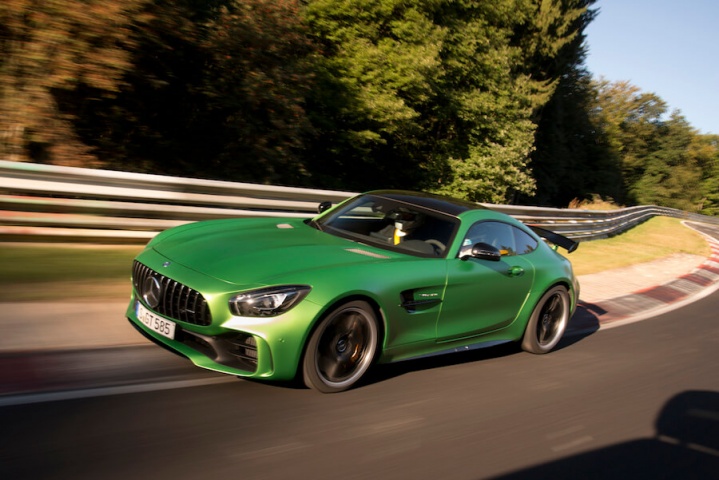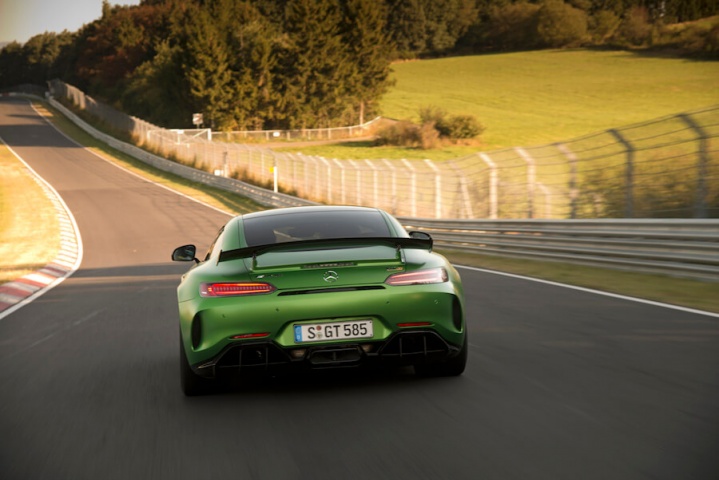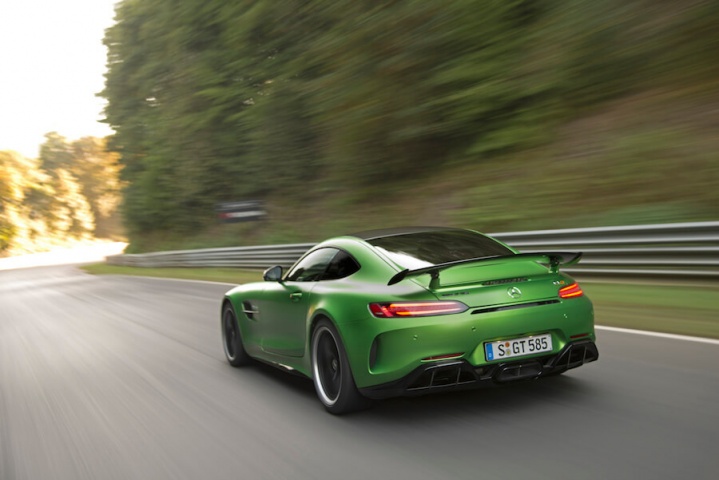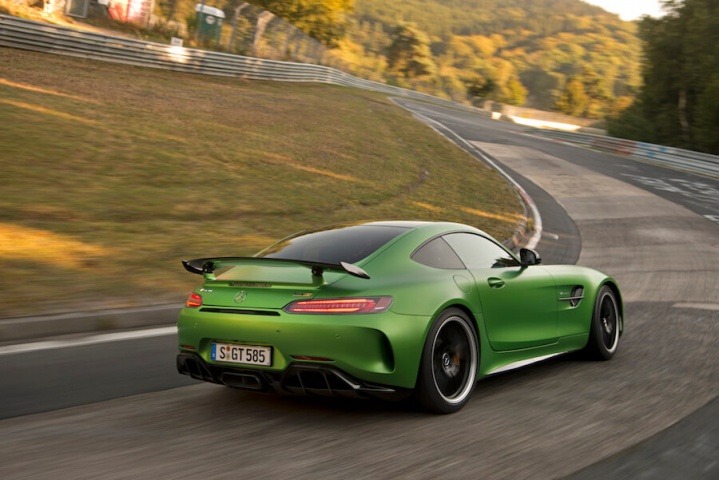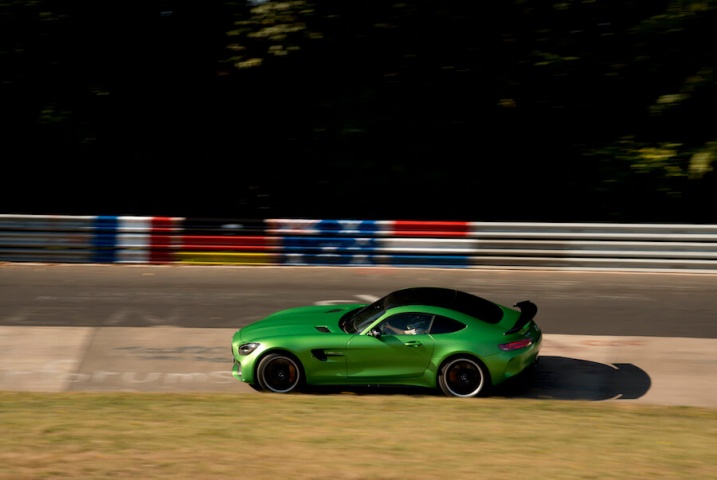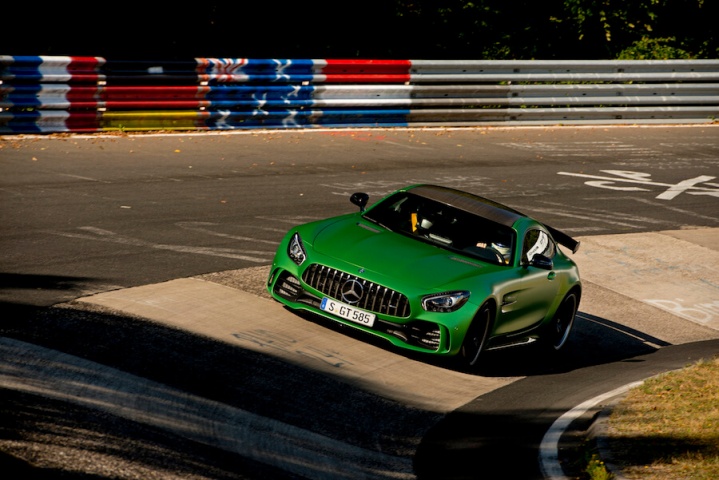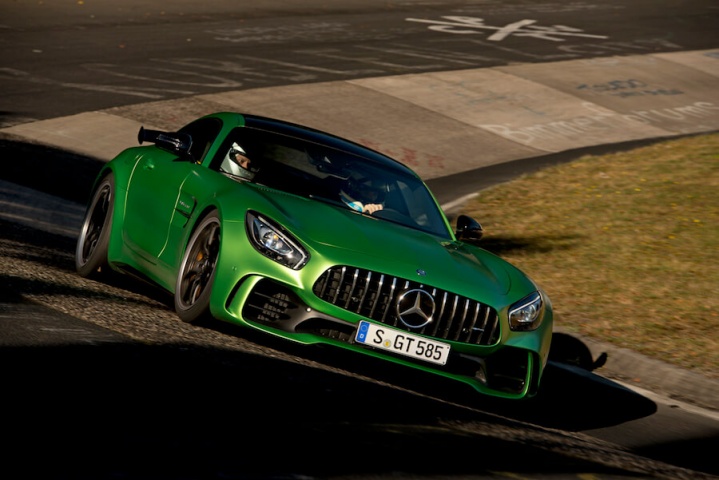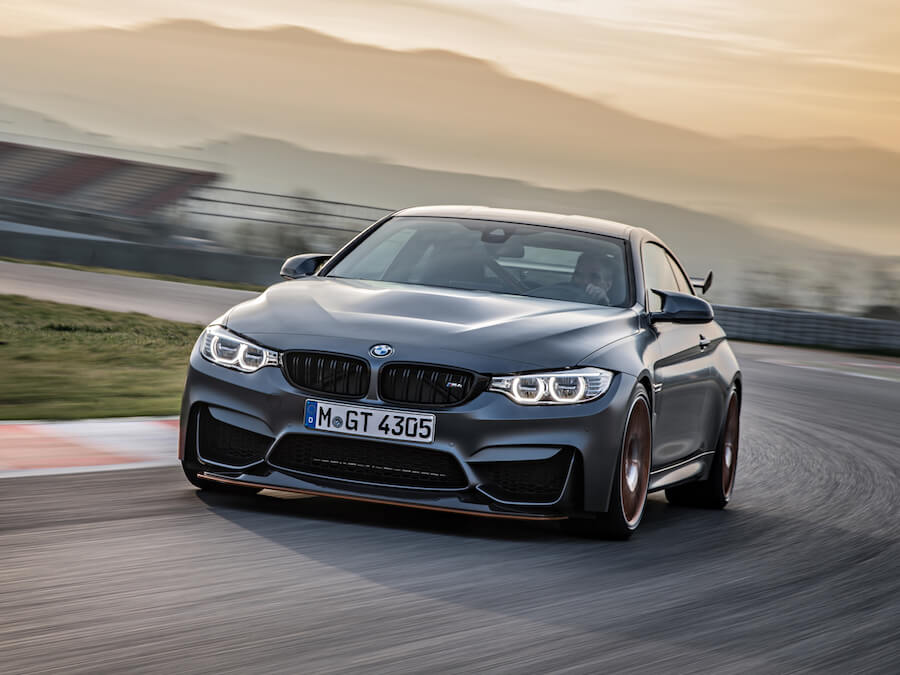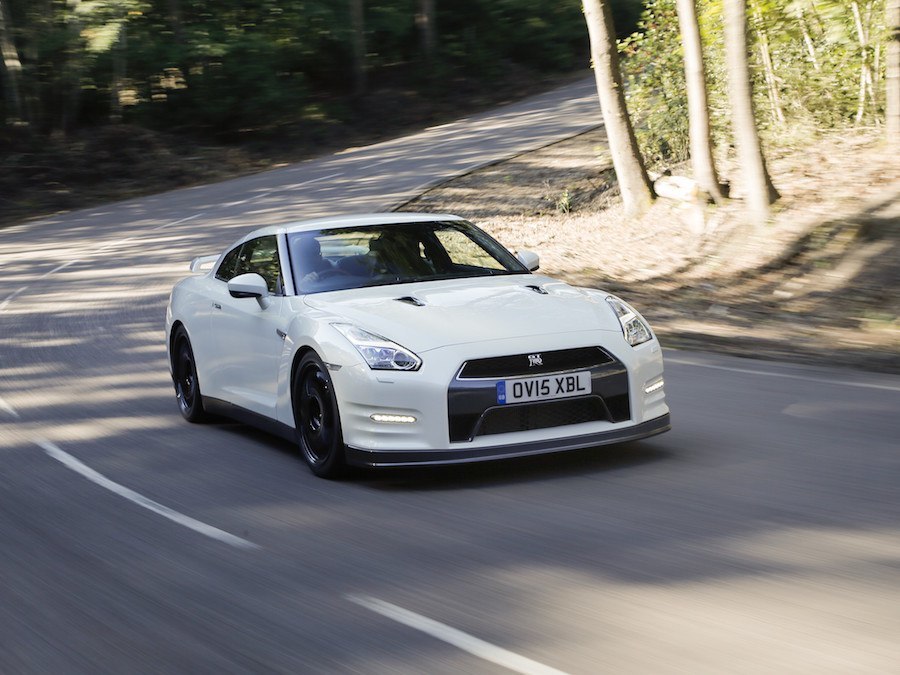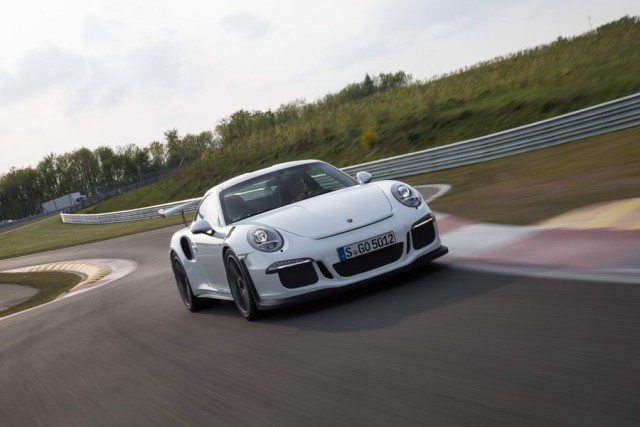Wrong seat, but right place, as we ride around the Nürburgring in AMG's new GT R coupe, a track-honed GT that's got the Porsche 911 GT3 RS in its crosshairs.
In the metal
It's metals, plural here and indeed carbon fibre, as the Mercedes-AMG GT R is a multi-material build that's part periodic table in its pursuit of speed. There are carbon fibre front wings; a steel bonnet with a magnesium structure ahead of it; the roof is carbon fibre, the rear wings aluminium; and those wings are wider front and rear to accommodate the GT R's wider track and standard 20-inch wheels. The front grille apes that of the 300SL that competed in the 1952 Carrera Panamericana race in Mexico, and it's also a nod to its AMG GT3 track relation, which, aside from some numbers on the side, sponsor stickers and a few bits of aero, it resembles.
Unlike the racer there's active aero here, a device popping down at over 80km/h (when Race mode is selected) creating a Venturi effect underneath, improving both front-axle downforce and stabilising the rear by managing the airflow underneath and through the double diffuser at the back. That also usefully improves cooling at the rear transaxle, as those holes between the lights help vent the heat from the transmission and differential, and from the titanium exhaust. There are forged aluminium hubs and wishbones, the rear fixings are ball jointed with no bushing for precision, while the coil-over spring and damper set up offers manual adjustment on the springs, as well as the familiar three-stage Comfort, Sport and Sport+ damping choices via a button in the centre console. Inside, that centre console itself is still a bit of a mess ergonomically, though the rest of the cabin builds on the racing theme, with deeply bolstered bucket seats and GT R specific displays in the centre screen, as well as between the instruments. There's a new dial with nine settings on it for the traction control, allowing everything from bolted down in the wet, to as wild as you like.
For all the weight removed a fair bit has been put back in, such as the rear-wheel steering system, some additional cross bracing at the rear, the wider body and aero elements. AMG's people have only added mass where the advantages significantly outweigh the additional weight. Even so, the GT R is some 15kg lighter than the standard GT S, has 155kg more downforce at v-max, is 75hp more powerful and retains a coefficient of drag that's better than its regular relation. Detail stuff, that's all been done with one goal, to increase focus, speed and agility, giving AMG a track-biased rival to Porsche's 911 GT3 RS.
Driving it
We didn't drive the car; let's get that clear from the off. But when you've got the Nürburgring closed, AMG's hottest new car and Thomas Jäger, AMG racer and the fella who has done most of the development driving of the GT R, then the passenger seat's just fine. His credentials are bang on; he races the GT R's track relation and is more comfortable around the Nürburgring at race speeds between bedtime and breakfast in the pitch dark than you are sleeping on your memory foam mattress. He's won races here, so it's safe to say he knows where each corner goes. Good thing too given the speeds the GT R is able to carry. Having driven a GT S a few weeks earlier the forceful shove and charismatic bark from the 4.0-litre V8 is still fresh in my memory, only here in the GT R there's more of both. Power is up thanks to new engine management, improved cooling and breathing as well as revised turbos, their internals spinning faster, while the V8 also revs more freely thanks to a lighter flywheel. The result, thanks in no small part to the titanium exhaust, is sensational, the V8 roaring with a racer's edge and providing even more prodigious pace.
While the reduction in mass overall is marginal, the chassis is better able to use its speed. It'll carry far more pace into and through a corner, and correspondingly the exit speed is higher. Jäger is a big fan of the rear-wheel steer system, wishing he could have it on his racing car, as it aids that turn in speed and accuracy, while adding stability through the bends and in high-speed direction changes, too. The aerodynamic updates help, as does the ability to manage the traction and the electronically controlled limited slip differential, as well as the damping. Here Jäger switches between Comfort and Sport, admitting Sport+ is a bit too stiff for the lumps and bumps of the Nürburgring. Certainly the way the GT R manages the tough tarmac here is impressive, the wheel and body control clear, the traction impressive. Even in particularly difficult areas like the carousel where the track spits you out and over a crest, the rear stays planted, even with Jäger asking for all the 4.0-litre V8's power on exit. The brakes, optional carbon ceramic items, are mighty, the force they produce, repeatedly, enough to make the fitment of a racing harness not just desirable, but entirely necessary.
Managing its mass better thanks to its more track-focused suspension, as well as the standard fitment of active mounts on the engine and transmission, the cornering forces are huge. It's the immediacy of response that's most apparent, though, the improved turn in clear, as is the engine's eagerness. We'll need to drive it to really ascertain the subtleties the GT R's changes have made to things like the gearshift and the steering, but from two very committed laps around the tough Nürburgring it's clear that the Porsche 911 GT3 RS doesn't need to be the default choice anymore for those wanting their sports car with serious track ability.
What you get for your money
There's no pricing as yet, nor is the specification certain, but if you're even considering the GT R then you can afford it. It's just like the GT S, only sharper and harder edged, yet it retains some road car civility and it's a desirable package, though just how competitive it is we'll only discover when AMG puts a price in its windscreen and us in the correct seat.
Summary
We'll know for sure when we drive the new Mercedes-AMG GT R, but from the passenger seat it seems that AMG has delivered on its promise - that being a more focused, track-ready GT. We'll know for certain soon, but our brief taster only has us wishing the time away until that happens.

